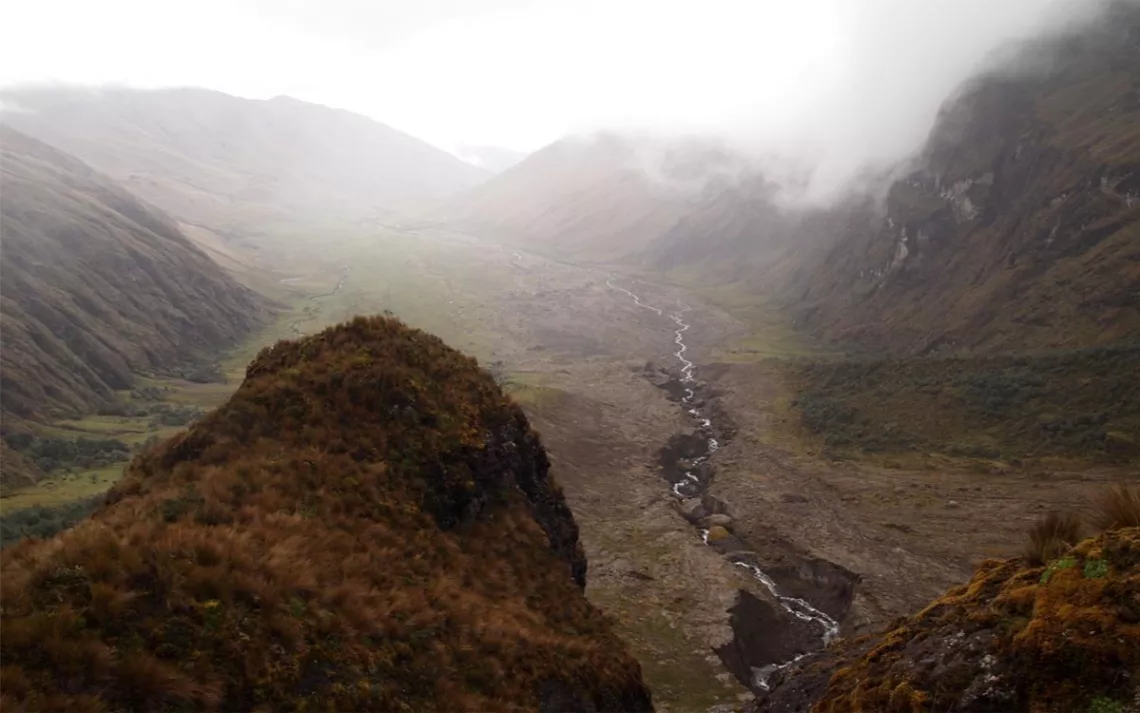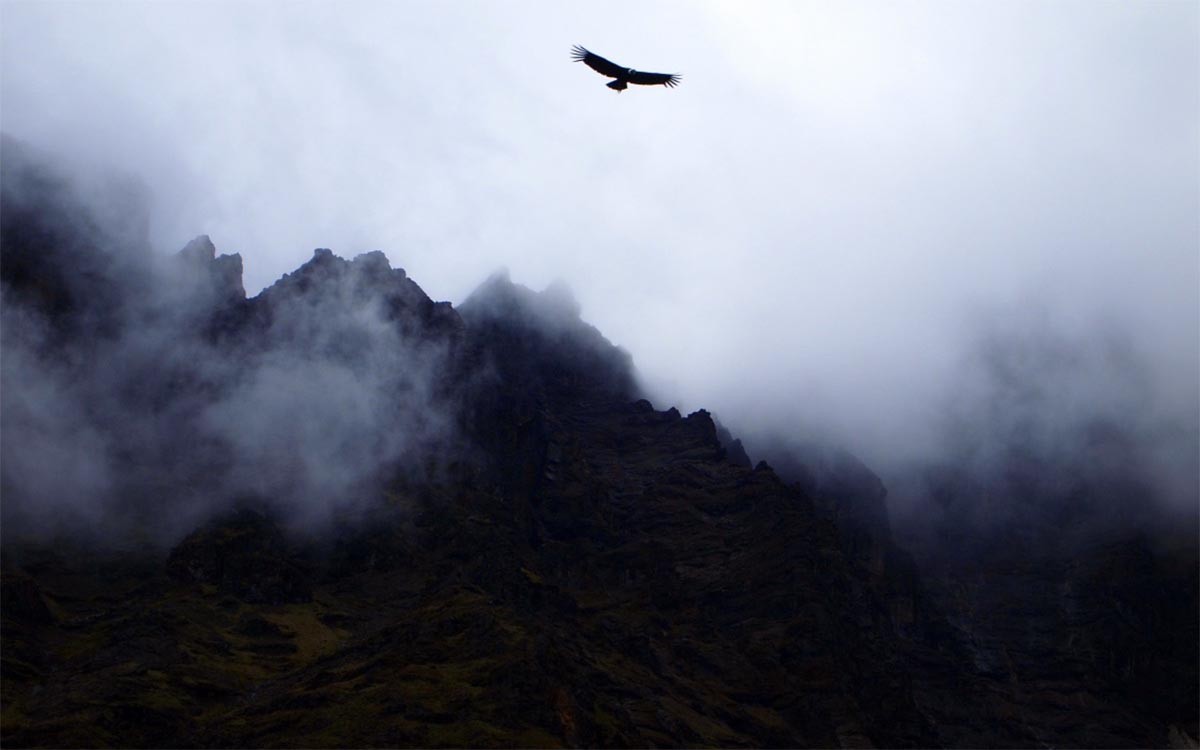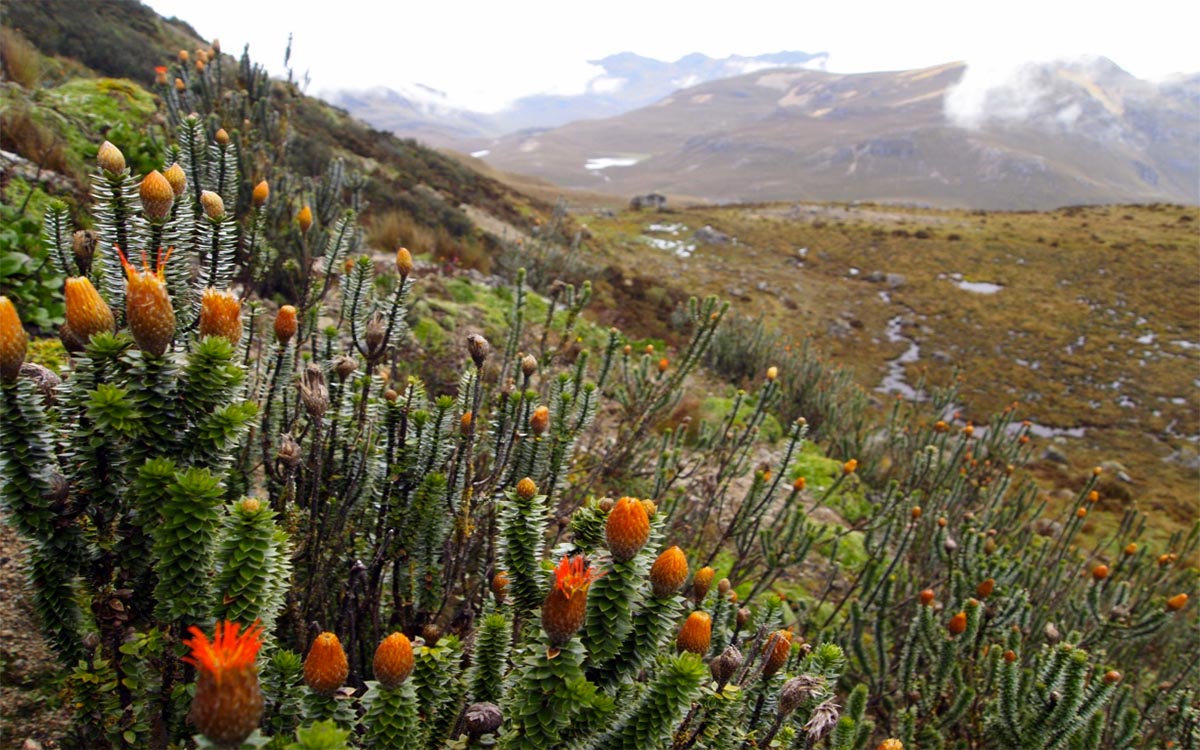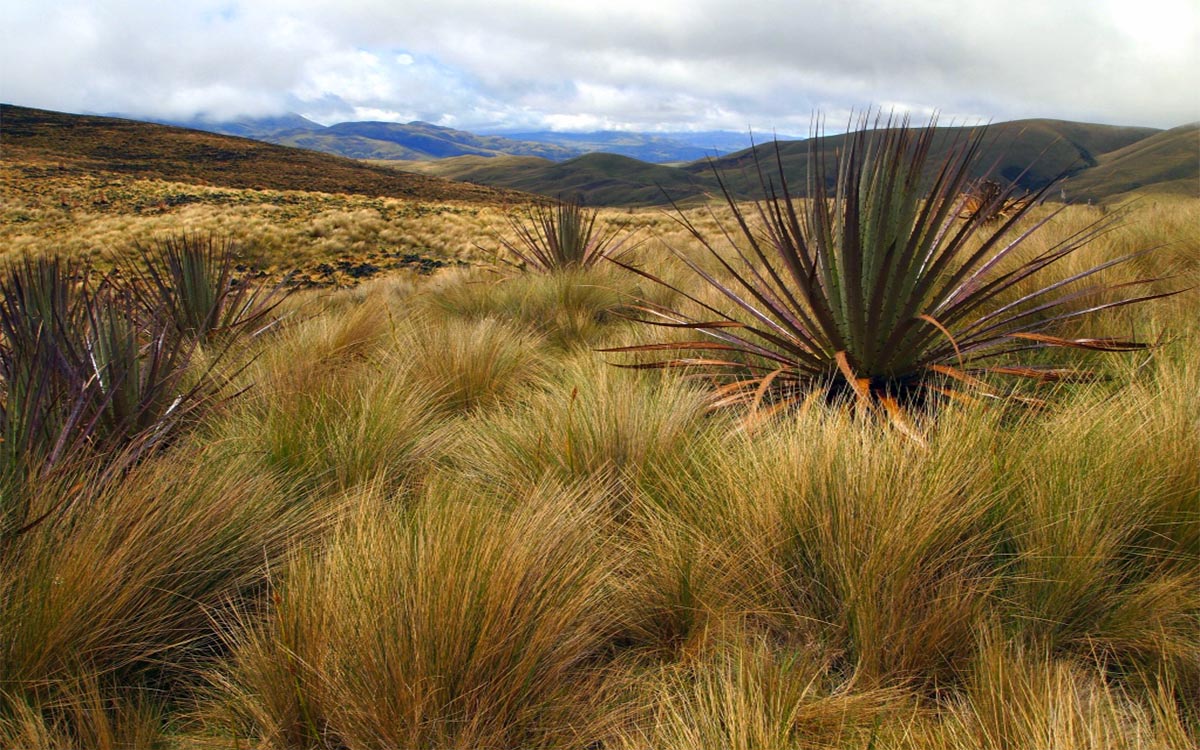The Trail up to Ecuador’s El Altar Is a Journey Back in Time
The crater in the High Andes harbors vestiges of the last ice age

Photos by Jesse Lewis
All day we’ve been gasping for breath in the thin air while trudging over muddy mountain switchbacks above 13,000 feet. It is a relief when the hills level out and we enter a vast glacial plain pockmarked with giant boulders. Crisscrossed with meltwater streams and ringed by cliffs, this flat stretch is like a natural amphitheater. It is eerily quiet and still. A herd of feral horses watch us and then suddenly spook as a huge bird drops down from the cliffs. It is an Andean condor. Like a mythological harpy, it circles us as we approach the misty spires of El Altar, the blown-out remains of an extinct super-volcano in Ecuador’s High Andes. I feel like we’ve walked straight into the Pleistocene and are getting a glimpse of the end of the last ice age more than 20,000 years ago. In reality, we are trekking through a unique and little-known ecosystem of high-altitude grasslands that dot the tallest mountains of the Northern Andes: a land of mist and wind, strangely adapted plants and rare animals, a place otherwise known as the páramo.
While typically found at elevations over 16,000 feet, páramos exist from Costa Rica to Bolivia. In these moorlands, high-altitude plants such as tussock grasses, dwarf shrubs, and cushion plants adapted to the wind and intense ultraviolet radiation flourish. Many of these plants are unique and found nowhere else on Earth. They are also poorly studied, which is why a dozen students and I are here for three months working with a local Ecuadorian NGO, Fundación Cordillera Tropical. We are helping to collect baseline data on páramo biodiversity and the resilience of these ecosystems to climate change. In learning more about these strange ecosystems, we hope to find better strategies for conserving them. For weeks we have been based at two remote camps at the southern edge of Sangay National Park: a 668,000-acre wilderness in Ecuador’s central cordilleras spanning Andean peaks to Amazonian rainforest.
As we begin the climb to El Altar, steep tussock hillsides rise up and flank us. We’re hemmed in by mountains on all sides except for a small gap that leads precipitously up to the crater rim. Small waterfalls tumble from the cliffs and whimsical orange Chuquiraga flowers bloom on the slopes. We take a breather halfway up, stopping to fill our water bottles. From this vantage point, the horses are only small shapes while the streams we crossed earlier take on the appearance of snakes unwinding sinuously across the valley floor. Meanwhile, the condor continues to circle above and has been joined by a companion.
In Andean cosmology, condors were believed to rule the upper world and were powerful omens of health and prosperity. Stretching up to 10.5 feet across, they have the largest wingspan of any land bird in the world. Feeding exclusively on carrion, they are an increasingly rare sight in the Northern Andes. Diminishing large-mammal prey, persecution, and habitat loss have taken their toll.
Other endangered species like mountain tapirs and spectacled bears also roam Sangay’s wilderness. They are rarely seen, but the signs of wildlife are everywhere if you know how to look. At our field camp, my students and I have frequently encountered the torn-up remains of giant puyas, a sort of giant land-bound bromeliad. Spectacled bears peel the spiky fronds away like an artichoke, leaving the chewed-up remains of the tender stalks strewn about. Andean foxes have raided our compost pile, and one week a puma killed several alpacas on a nearby ranch and stalked our camp, putting us all on edge. The páramo can be a wild place.



Continuing our climb, we eventually gain the crater rim and are immediately buffeted by icy winds. Surprisingly, the condors are still circling and now swoop down right beside us on the cliffs. Gliding like great griffons directly into the winds, they are only feet away—close enough that we can look right into their vulturine eyes and observe their horny brows. Again and again they circle back before we finally unpuzzle the mystery of their behavior. As we watch, they each take turns returning to a nest perched on a nearby ledge. Like any good parents, they are looking after their young while keeping a wary eye on us. We feel like special guests at an exclusive event. To have seen this pair so close in this spectacular location feels like a blessing and a good omen for our trip.
From here, the mark of the ice age is visible in the deep valleys, forlorn boulders, and hollowed-out lakes that pockmark the landscape below. As temperatures warmed, páramo grasslands thrived at the edge of the melting ice sheets. Recent archaeological evidence has led some researchers to believe that early hunter-gatherers may have periodically burned the páramo to create grazing habitat for the large ice-age animals they hunted—creatures like mammoths, ground sloths, and other large grazers. Even today, local people utilize these grasslands for grazing with the help of periodic burning. Thus it could be argued that the páramo is an ecosystem born of both fire and ice.
Our group has almost reached the edge of El Altar’s remnant hanging glacier. A yellow lake of sediment-rich meltwater pools at the edge of the ice, framing the mountains like an altar. The silence is broken only by the crack and pop of the ice, the sound ricocheting off the mountain walls.
I stand there and think about how glaciers like this one are disappearing all over the world as a result of climate change. It comforts me to know that with a sturdy pair of boots and a little imagination, it’s still possible for now to travel back to the Pleistocene and catch sight of a time when the ice held sway over the earth.
Follow in the Writer’s Footsteps
Where: Sangay National Park in Central Ecuador
Getting There: It is a one-hour bus ride from the city of Riobamba to the small village of Candelaria. Most visitors do this hike as a three-day out-and-back. A popular option is to spend the first night at Hacienda Relenche at the start of the trail, which has basic beds, a kitchen, and hot water. The hacienda also keeps a simple refuge at the foot of the volcano with running water, but you’ll need a sleeping bag. From the hacienda, it's typically a four-to-eight-hour hike to the plain. From the refuge, it’s another two hours across the valley and up a steep hill to the crater.
Best Time to Visit: Any time of year, weather dependent
Permits: There's a fee to enter Sangay National Park. US$2 for Ecuadorian nationals; US$10 for foreigners.
Survival Tip: The weather in the páramo and around El Altar is notoriously unpredictable. Prepare for inclement weather at any time, including rain, fog, or even snow.
What to Wear: The trails can be very muddy after rain. Pick up a pair of rubber boots and warm, waterproof clothing.
Wildlife Spotting: Look for the large, unmistakable silhouettes of Andean condors. Other wildlife such as Andean foxes, bears, and a variety of páramo bird species can be found throughout Sangay National Park.
 The Magazine of The Sierra Club
The Magazine of The Sierra Club



